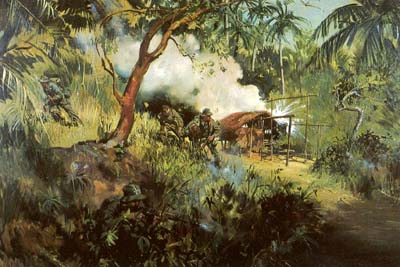THE ROYAL GREEN JACKETS

Formative Years in North America
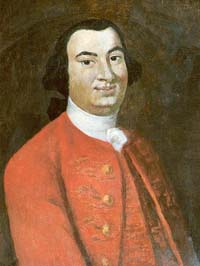
On
8th July 1755 a column of British redcoats under General Braddock,
advancing to take Fort Duquesne on the Ohio River was ambushed by the
French and their Red Indian allies firing from concealed positions. The
dying general's last words, 'we shall learn better how to do it next
time', sum up the reaction at home to this defeat, for within a few months
a special Act of Parliament had provided for the raising of the 6Oth Royal
American Regiment of four battalions of American colonists. Among the
distinguished foreign officers given commissions was Henri Bouquet, a
Swiss citizen, whose ideas on tactics, training and man-management
(including the unofficial introduction of the rifle and 'battle-dress')
were to become universal in the Army only after another 150 years.
The new regiment fought at Louisbourg in 1758 and Quebec in 1759 in the campaign which finally wrested Canada from France; at Quebec it won from Wolfe the motto Celer et Audax (Swift and Bold). These were conventional battles on the European model, but the challenge of Pontiac's Red Indian rebellion in 1763 was of a very different character and threatened the British control of North America. The new regiment at first lost several outlying garrisons but finally proved its mastery of forest warfare under Bouquet's leadership at the decisive victory of Bushey Run.
The West Indies
Meanwhile,
battalions of the regiment were engaged in the capture of Martinique and
Havannah and, being confined to foreign service until 1824, began an
association with the West Indies which was to last almost continuously for
over fifty years and include the capture of another eight islands.
The American War of Independence (1774-82)
Two
battalions fought in the war, formed a force of mounted infantry to
increase their mobility and crowned a series of successful actions by
repulsing an assault by the French and Rebels on Savannah in Georgia and
capturing the colour of their Carolina Regiment. Neither battalion was
present at the surrender at Yorktown and they were withdrawn to Canada
when hostilities ended.
The Fifth Battalion
In
1797 a 5th Battalion of the 6Oth was raised under Baron Francis de
Rottenburg, whose treatise on Riflemen and Light Infantry formed the basis
of , Moore's training. This was the first British unit to be dressed in
the green jacket and armed with the rifle in place of the smoothbore
musket and it represented the first British attempt at developing
specialised light infantry for the European battlefield.
The Peninsular War (1808-14)
Imperial Campaigns
The
defeat of Napoleon was followed by over thirty years of peace during which
the regiment changed its title, first to The Duke of York's Own Rifle
Corps and finally, in 1830, to The King's Royal Rifle Corps (KRRC), though
throughout its life it was often known familiarly as the 60th Rifles. In
1858 the Rifle Depot was established at Winchester as a headquarters and
training centre for the KRRC and Rifle Brigade.
After
1848 the regiment was engaged in many of the Imperial campaigns which
characterised the nineteenth century .The 1st Battalion fought at Mooltan
and Goojerat in the Sikh Wars and the 2nd in the Kaffir wars in South Africa,
where a detachment stood alongside one from the 43rd at the sinking of the
Birkenhead. In the next thirty years the regiment saw active
service in China, Canada, Afghanistan, India, Burma and South Africa and
the period produced another great innovator in the shape of Robert Hawley,
who developed Bouquet's principles of self-reliance and initiative,
particularly by the encouragement of hunting expeditions as basic training
in good fieldcraft, while commanding the 4th Battalion in Canada.
The Indian Mutiny (1857-59)
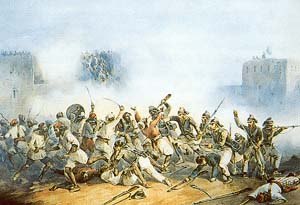
The Warren Hastings
The South African Wars (1899-1902)
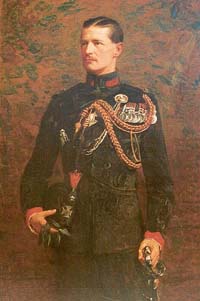
World War I (1914-18)
In
1914-15 the regiment expanded to twenty-two battalions, not counting those
with training and reserve roles at home. Fighting in the early months
still favoured the traditional Rifleman's skills of fire and movement and
in 1914 at Hautesvesnes 1KRRC used them to destroy a whole German
battalion.
The later stages were not conducive to tactical innovation, but marksmanship developed in peacetime was an invaluable asset at a time of ascendancy of fire over manoeuvre. The vast majority of the regiment's effort was devoted to the Western Front, where it gained eight VCs, 2128 other decorations and seventy-one Battle Honours at a cost of 12,824 dead.
Mechanised Infantry
World War II (1939-45)
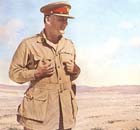
The
war opened disastrously with the despatch of the 2nd Battalion together
with 1st Rifle Brigade and Queen Victoria's Rifles (an affiliated
Territorial Battalion) to defend Calais and prevent German armour from
interfering in the evacuation of the British Expeditionary Force from
Dunkirk. For three vital days the force held on before being overwhelmed;
the regiment had lost one of its two regular battalions practically as
soon as the war started.
Thereafter
matters improved; motor battalions played a central role in the open
warfare of the North African desert, where mobility and initiative could
make their mark. At Sidi Rezegh Rifleman Beeley won a posthumous VC in a
successful attack by 1KRRC against great odds. Once the desert campaign
was won battalions fought on through Italy and North-West Europe to
Austria and Germany and also saw desperate fighting in Greece and Crete.
The origins of the regiment were recalled early in the war
The Post-War Years
